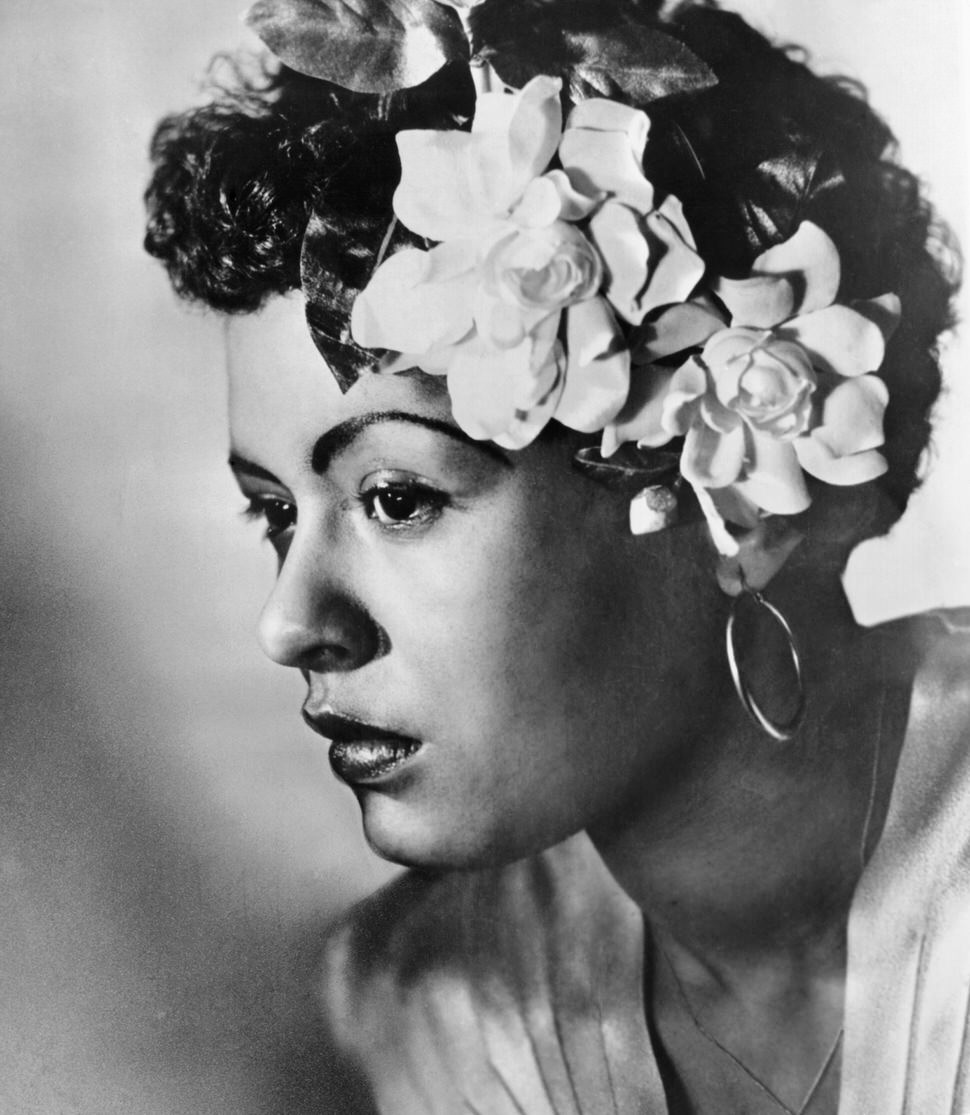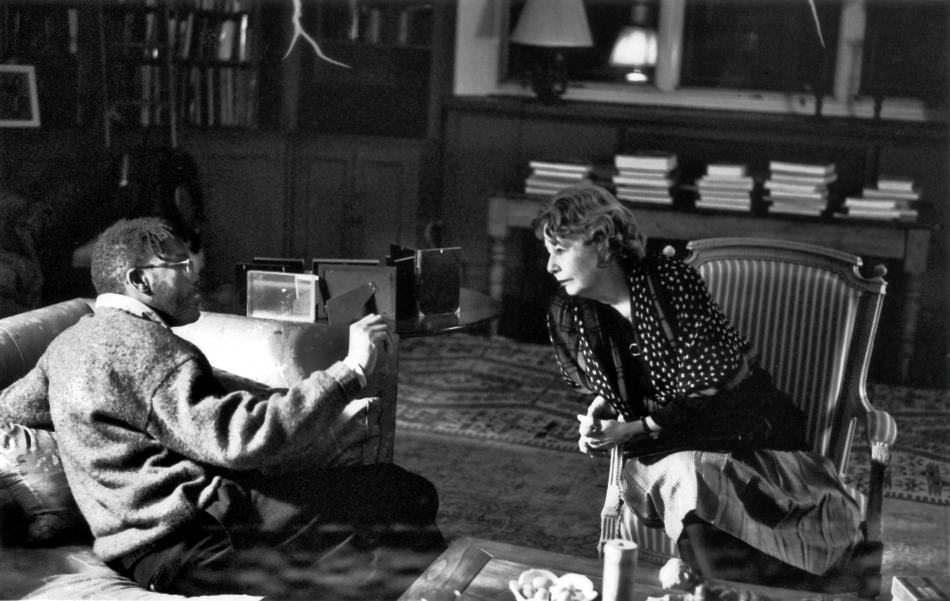Darryl Pinckney remembers Elizabeth Hardwick’s portrait of Billie Holiday, which first appeared in the March 4, 1976 issue of The New York Review, and later as a chapter in her book of autobiographical fiction, Sleepless Nights.
When Elizabeth Hardwick was in New York in the 1940s, practically everybody called her Lizzie. Harry May called her Elizabeth. They’d been in graduate school together at Columbia. He’d dropped out before her. They’d found each other again after her husband, Robert Lowell, left in 1970. Lizzie said that Harry used to say his ambition was to sink into the lower classes and that was what he’d done, living out his life among railroad men in Virginia, in love with them. I think of 1975 and remember a tall, silver haired gentleman. I’m like you, he said, I think Elizabeth is the bee’s knees. Harry, she said, and blew a kiss across the room.
She had a way of dusting off a record on the backside of her skirt. I could not learn the box step, but Harry guided her around her living room, and when they broke apart, they were inclined toward each other, bent at the waist, dropping into easy recall of the dance moves of their era. They cut a rug to Ella and Louis, but when Lizzie dusted off a Billie Holiday record, she sat and concentrated, even on up tempo numbers, often with her chin in her palm and her elbow atop her crossed leg. Louis Armstrong taught everyone how to sing behind the beat, she said. She liked Billie Holiday’s early recordings, from 1935, say, but it was the Billie Holiday of the 1940s whom Lizzie preferred. Those were the years of Lizzie’s independent life in New York, of clubs on West 52nd Street and romances. I once brought her a record of Billie Holiday’s late sessions and she made me turn it off right away, the sound of what to her was a ruined voice was too painful.
She told me that in her back-when she and a friend used to search through boxes in record stores until their fingers bled and, lo, there that detail was in 1976, in the manuscript of the Billie Holiday chapter of Sleepless Nights, as well as other things she’d said, like how their hearts pounded when they with their pale faces went up to see the great singer in Harlem. She was writing fiction about her life, not autobiography, yet the emotional truth of her experiences was important and sometimes to remember consoled. Another classmate, Greer Johnson, not Harry May, was the model for J. in that chapter. Johnson had been her roommate in the Hotel Schuyler on 45th street. J. is something of a fairy and longs for the love of what she calls a normal man. I argued, but she insisted that that was true to his psychology, his vintage.
Lizzie really minded the sentimentality going around then, the 1970s, about Billie Holiday as a woman who’d lived her songs, the whole Lady Sings the Blues thing. In her portrait of Billie Holiday, she wanted to evoke a singularly conscious individual, someone who had worked to perfect her art, a singer who knew what she was doing, a supreme musician. She also wanted to get across the tremendous force and sophistication of Billie Holiday’s character, her willfulness, and the size her alcohol and heroin addictions had to become in order for them to cut her down. Billie Holiday was nobody’s victim and held no one responsible for her choices. The bizarre deity—she adored Baudelaire’s phrase about his brown-skinned mistress.
Once, completely blotto, I read aloud Frank O’Hara’s ‘The Day Lady Died,’ and Lizzie said that Cal liked for her to play her jazz records, but he didn’t really get them. Their daughter Harriet did. Lizzie said that you can listen to opera by yourself, but not certain kinds of jazz. You had to have someone with you when you listened to Billie Holiday, for instance. Otherwise, you might kill yourself. But then you might want to shoot yourself if you were listening with the wrong person, so why not have another.



